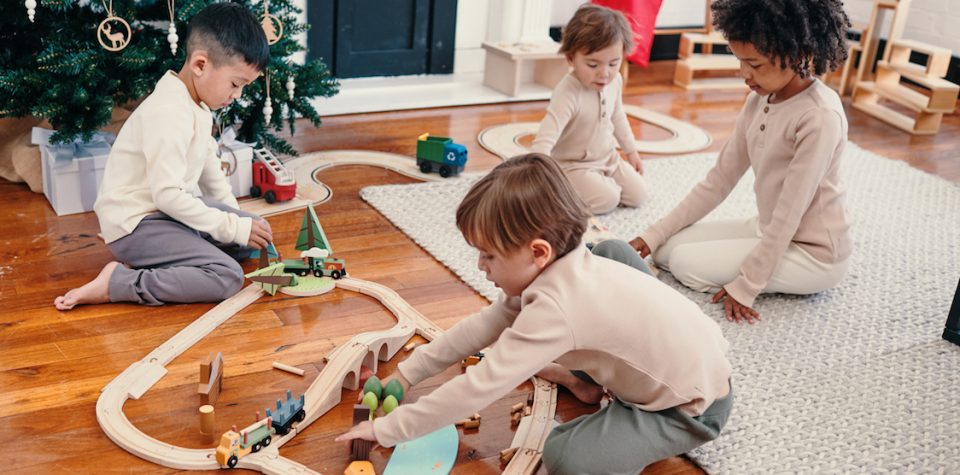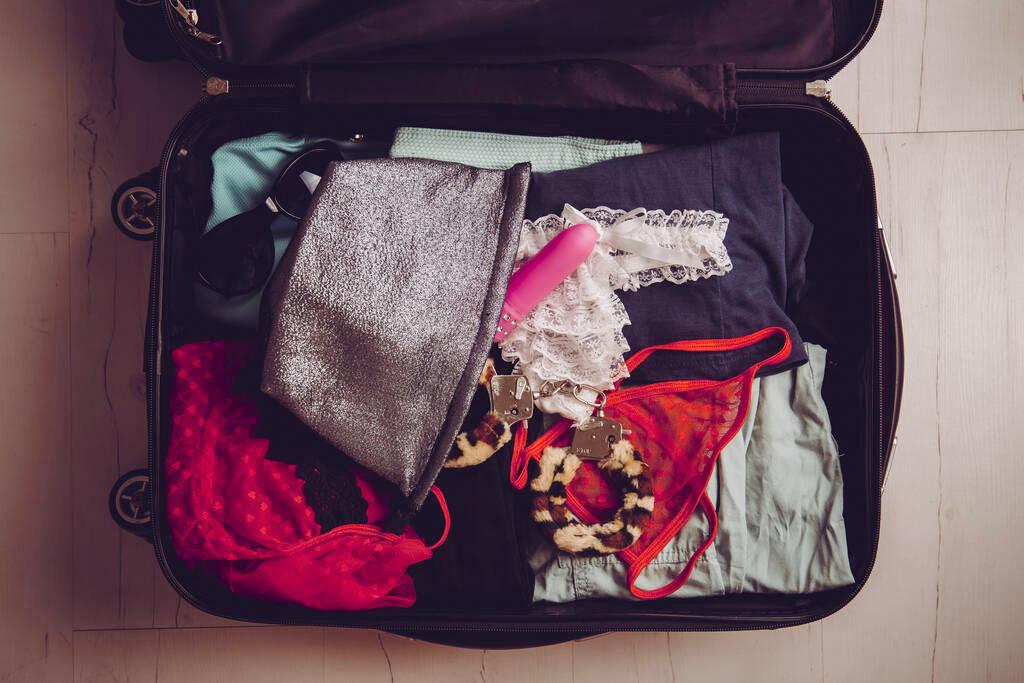Choosing the appropriate toys for your infant is about more than simply having fun; it’s also about nurturing development. As newborns go through the developmental phases, their demands, talents, and curiosity change swiftly. Toys appropriate for their age not only amuse children but also help kids develop motor skills, emotional awareness, and problem-solving abilities. Toys that correspond to your baby’s developmental stages help promote growth and safe exploration. Whether your child is discovering their fingers or learning to crawl, the proper toy may make all the difference. Let’s look at how to choose toys that promote your baby’s learning at all ages and stages.
Why Is Choosing Age-Appropriate Toys Important?
Developmental Milestones and Toy Safety
Each stage of infancy has its own set of milestones, including grasping, sitting, crawling, and walking. Toys that match these developmental stages allow infants to safely practice new abilities. For example, soft toys promote reaching during belly time, which builds muscles. As infants develop, little pieces provide a choking threat. Thus, age restrictions are important. Toys made for various age groups are evaluated for safety, durability, and size. Ignoring these principles might result in mishaps or lost growth chances. Age-appropriate toys give the ideal challenge, boosting development while minimizing frustration. Choosing toys depending on age guarantees that your baby can play, learn, and be safe at the same time.
Cognitive and Emotional Benefits
Toys are more than simply physical instruments; they influence how infants think and feel. Babies’ memory, attentiveness, and emotional expressiveness grow at all ages. Interactive toys, such as rattles and mirrors, encourage infants to react, which promotes self-awareness and early communication. Toys with buttons, music, or tales help children learn cause and effect and develop emotional connections as they become older. Toys that react to activities, such as lights or music, encourage curiosity and delight. These experiences help newborns develop confidence and resilience. Toys that are carefully picked promote not just cognitive growth but also emotional regulation—especially if they are appropriate for your baby’s developmental stage.
Preventing Overstimulation and Frustration
Giving a baby a toy that is too complex might cause confusion, whilst toys that are too basic may tire them. Toys with loud sounds or complicated features might be overstimulating for young babies, resulting in crankiness or indifference. Age-appropriate toys prevent this by providing the ideal degree of involvement. They help infants concentrate without getting irritated, resulting in longer play periods. Toys with calming lights and soft noises, such as the Alilo Smarty Bunny, assist babies aged 6 to 12 months. Choosing properly ensures your infant may enjoy playtime without worry, which builds attention span rather than anxiety.
What Are the Best Toys by Age Group?
0–6 Months: Sensory Stimulation and Tummy Time
Newborns use touch, sight, and sound to sense their surroundings. Play mats with plenty of texture, high-contrast cards, and soft rattles all support sensory development. Mirrors and crinkly materials are examples of tummy time toys that strengthen the upper body and neck. Beyond just providing entertainment, these toys aid in the development of critical motor skills and visual tracking in children. Seek for items with vibrant hues and gentle sounds that won’t startle. A baby’s curiosity is stimulated without being overstimulated by hanging toys that swing over its back. It is better to keep things simple at this point. Babies can confidently reach, roll, and raise their heads thanks to safe, stimulating toys that allow them to interact with their environment.
6–12 Months: Motor Skills and Object Permanence
At this age, newborns are anxious to move, grip, and investigate cause and effect. Ideal toys are those that roll, light up, or make a noise when touched. The Alilo Smarty Bunny baby rattle, for example, provides a range of sounds, calming lights, and color recognition—all designed to promote sensory and motor development. Stacking cups, push-pull toys, and interactive play mats all promote crawling and coordination. Treasure baskets and grip blocks encourage fine motor development. Most significantly, these toys help children make cognitive leaps such as object permanence—the belief that items persist even when they are not visible. Choosing baby toys at 6-12 months promotes enjoyable, meaningful learning.
12–24 Months: Cause-and-Effect and Pretend Play
A combination of movement-based and imagination-driven play keeps learning dynamic. Toddlers love to experiment with their power to influence the world. Reacting toys, such as pop-up animals or light-up buttons, reinforce cause-and-effect thinking. Pretend play also emerges around this time. Dolls, play food, and toy phones allow toddlers to mimic adults, fostering creativity and social understanding. Push toys, wooden coin boxes, and activity cubes build coordination and introduce problem-solving. As toddlers become more independent, it is important to choose toys that challenge them without frustrating them.
How to Choose Safe and Engaging Toys?
Look for Certifications and Labels
A safety certification should always be checked before buying a toy. Toys with labels like ASTM, CE, or RoHS are guaranteed to adhere to global safety regulations. Lead-free, BPA-free, and non-toxic materials are crucial, particularly for infants who want to mouth everything. Reputable toys often include safety indicators, age restrictions, and use guidelines. For instance, the Alilo Smarty Bunny is constructed of silicone that is safe for mouthing and has received RoHS certification. Steer clear of toys with loose stuffing, little detachable bits, or sharp edges. You might feel more at ease by looking at the brand’s reputation and packaging. Safe toys aren’t optional; they’re simply nice. Babies must be allowed to explore without fear of injury or danger.
Match the Toy to Your Baby’s Interests
Not every baby enjoys the same toys. Some are captivated by music, while others want movement or texture. Keep an eye on what your infant enjoys and choose toys that reflect their interests. If your youngster enjoys lights and music, an interactive rattle such as the Alilo Bunny may be suitable. If kids like stacking, choose cups or bricks. Following your baby’s lead makes playtime more meaningful and engaging. Interests change quickly, so be prepared to adjust. Matching toys to interest, not simply age, promotes motivation and learning. Toys that pique your baby’s interest make it easy to foster concentrated, developmentally rich play.
Prioritize Durability and Easy Cleaning
Babies often chew, drool, and chuck their toys. That’s why durability and hygiene are important. Choose toys made of high-quality plastic, silicone, or wood that can withstand hard use. Avoid plush toys made of poorly stitched or non-washable materials. For example, toys like the Alilo Smarty Bunny combine technological capabilities with washable surfaces, making cleaning a breeze. Stacking cups and grab blocks are often dishwasher-safe or wipeable. Toys should be durable and safe enough to withstand regular use. A sturdy, clean toy is a healthy toy—free of germs and always ready for another round of play and learning.
Conclusion
Selecting age-appropriate toys isn’t just about fun—it’s a foundation for growth. From the first sensory toys to infant toys 6 12 months that spark curiosity, each stage requires thoughtful choices. Prioritize safety, durability, and your baby’s specific interests to make playtime both enjoyable and productive. Every toy, including a light-up rattle, a pull-up bar, and stacking cups, contributes to your baby’s growth. As your kid develops, adjust their toys to reflect new abilities and milestones. Remember that the correct toy at the appropriate time does more than just amuse; it influences how your baby learns, explores, and interacts with the environment.






